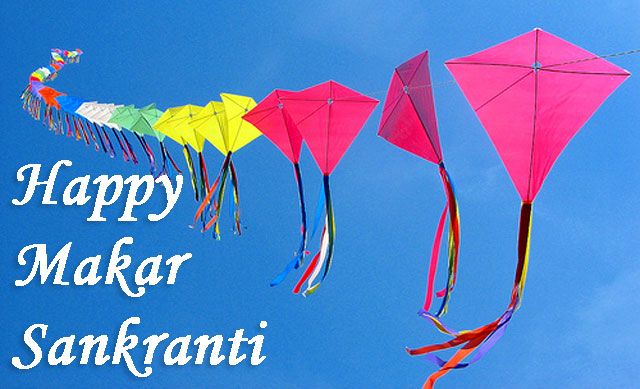Makar Sankranti is celebrated as per the Hindu calendar month of Magha. This festival is celebrated for innumerable reasons depending on various climate, agricultural environment, cultural background and location. Makar Sankranti marks the transition of the Sun into Capricorn on its celestial path. There is another significance of this day i.e. the days start becoming longer and warmer and thus the chill of winter declines.
Significance:
The festival of Makar Sankranti is associated with much cultural significance:
—The Puranas say that on this day Sun visits the house of his son Shani, who is the swami of Makar Rashi. This day symbolizes the healthy relationship of father & son. It is the son who has the responsibility to carry forward his fathers dream and the continuity of the family.
— It was on this day when Lord Vishnu ended the ever increasing terror of the Asuras by finishing them off and burying their heads under the Mandara Parvata (Mountain). So this occasion also represents the end of negativities and beginning of an era of righteous living.
This festival is observed largely in Odisha by everyone. Since this occasion falls just after the harvesting of the paddy crops is over in Orissa. Particularly, the festival is observed largely among all with joy and ceremony.
In Jagannath temple at puri this festival is observed as Uttarayana Yatra and Uttarayan Vandapana of lord Jagannath. People offer a special kind of newly harvested rice and sugarcane mixed with jaggery, grated coconut, banana, molasses, chenna (cheese), Khua, various fruits, dry fruits and milk called “Makara Chaula” to the presiding deity, the SunGod & lit solemn pyre for satisfying the evil elements plaguing household. This day is also observed in Jagannath temple, Puri with two popular Veshas (costumes) of Lord Jagannath i.e. Nabanka Vesha (one day before Makar Sankranti) and Makara Chaurashi Vesha (on the day of Makar Sankranti).
In the districts of Mayurbhanj, Keonjhar and Sundargarh where the tribal population is more than forty per cent, the festival is celebrated with great joy and merriment. Moreover, the time of the festival is best suited for them as all agricultural operations are over by that time and each family possess something after the harvest. They sing and dance and enjoy life for about a week. Young girls of certain communities mostly Kudumi, Bastiti, Rajual etc. worship ‘Tushu’, a female deity and immerse it in the river or tank singing songs of a special variety.
People in several places of the state prepare special sweet rice made with sugar, banana, coconut and black pepper and offered it to the gods. They also distributed the special rice popularly known as Makar Chaula.
Makar Sankranti is considered one of the most auspicious days by Hindus. Many believe that a ritual bath at ponds and rivers and prayers at temples on the occasion would cleanse them of diseases and wash away sins.Thousands of devotees also worship the sun god at Konark with great fervour and enthusiasm.
Kite-flying competitions are organised in places like Cuttack and other towns with fun and enthusiasm.

